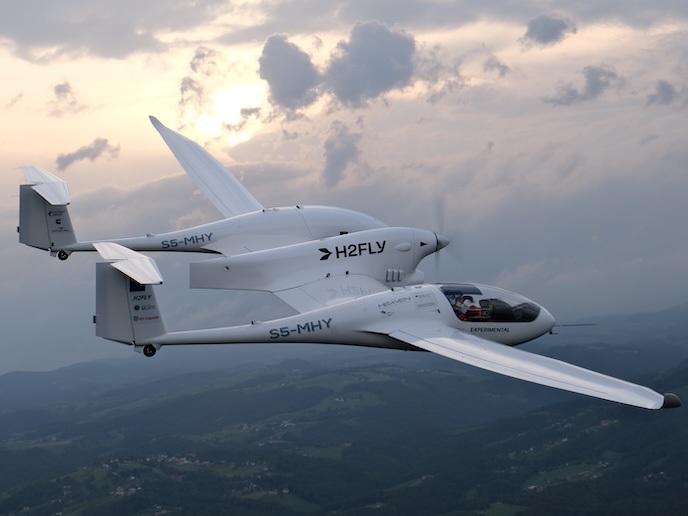First piloted flight of liquid hydrogen-powered electric aircraft
While aviation in the EU contributes to 3% of global emissions, its overall climate change effect is greater due to secondary contributory mechanisms. Aircraft powered by hydrogen-electric powertrains offer a less polluting alternative, as the fuel cell system generates electric power through a chemical reaction between hydrogen and oxygen, with water vapour the only by-product. Furthermore, such systems operate silently, reducing flight noise levels. “But first, to meet aviation reliability, safety and weight standards, critical issues related to fuel cell operation – specifically air, fuel, water and thermal management – must be improved,” according to Maria Sol Rau, coordinator of the EU-funded HEAVEN project. The project’s consortium developed a prototype hybrid-electric powertrain consisting of a high power density fuel cell system alongside high energy density cryogenic hydrogen storage. “We transferred key fuel cell and liquid hydrogen innovations from the automotive and space sectors to aviation, building know-how and validating performance, range, efficiency and emissions reductions,” notes Rau from H2FLY, the project coordinator. In September 2023, the HEAVEN consortium successfully completed the world’s first liquid hydrogen flight with the experimental HY4 aircraft at Maribor Airport, Slovenia.
The powertrain proves its worth
Integrating fuel cell systems into an aircraft capable of handling cryogenic hydrogen, as an alternative to gaseous hydrogen, is challenging. Standard components are often unsuitable, requiring tailored options. Additionally, infrastructure must: enable the deployment of hydrogen storage systems with effective venting; build transportation networks; and establish refuelling systems at test facilities or airports. “This requires substantial financial investment, careful coordination and innovative engineering solutions. But getting it right promises a genuinely competitive alternative to conventional combustion engines, with lower running costs, decarbonisation and new routes,” adds Rau. During the project, Air Liquide Advanced Technologies (ALAT) designed, built and optimised the liquid hydrogen tank, alongside the necessary ground support equipment (with venting) for refuelling operations based on H2FLY’s requirements. Pipistrel Vertical Solutions led the integration of the liquid hydrogen tank into the test aircraft, making airframe modifications and structural safety tests. H2FLY then coupled the tank with the aircraft’s fuel cell system at ALAT’s testing facilities in France. The hydrogen-powered electric test aircraft HY4 – previously bought by H2FLY for prior projects such as the EU-funded MAHEPA project – showcased HEAVEN’s prototype powertrain system in late summer 2023. Completing seven test flights – three using gaseous hydrogen and the last four liquid hydrogen as the energy source – the HEAVEN consortium successfully demonstrated that liquid hydrogen can double the maximum range of the HY4 aircraft from 750 km to 1 500 km. “We reached over three hours of flight time in one test, with positive overall results bringing us closer to emissions-free, medium- and long-haul commercial flights,” says Rau.
Long-haul potential for larger aircraft
The use of liquified cryogenic hydrogen compared with pressurised gaseous hydrogen storage, significantly lowers tank weights and volume, increasing the aircraft’s range and payload. “Our focus on liquid hydrogen storage and infrastructure in aviation, contributes to EU ambitions for a hydrogen clean energy ecosystem across various sectors, as well as the European Green Deal’s aim of climate neutrality by 2050,” concludes Rau. The team continues to develop the fuel cell and liquid hydrogen systems to enable its application in larger aircraft capable of longer ranges. Ultimately, the success of hydrogen-electric flight will also depend on the development of airport infrastructure suitable for hydrogen, alongside sufficient production, storage and distribution of green liquid hydrogen.
Keywords
HEAVEN, hydrogen, aircraft, powertrain, aviation, fuel cell, cryogenic, flight, greenhouse gas



